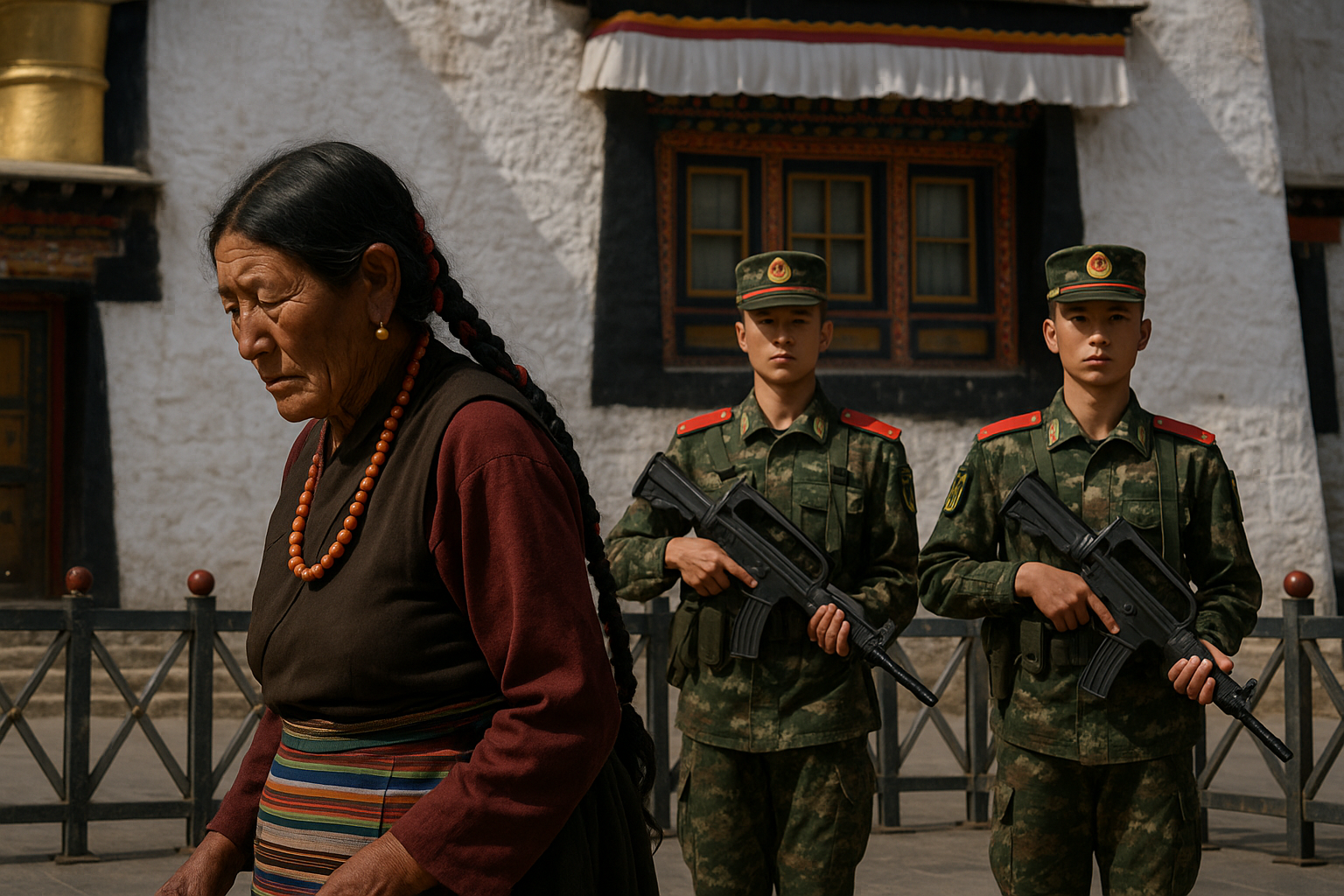Nearly a million Tibetan children are separated from their families in state-run boarding schools. What Beijing calls modernisation looks more like cultural erasure. And on India’s Himalayan frontier, the same assimilationist project carries unmistakable military undertones.
Education as a weapon
In February 2023, UN human rights experts raised alarm over Beijing’s schooling policies in Tibet. According to their estimate, around one million Tibetan children had been placed in government-run residential schools, often far from their families. These institutions prohibit the use of Tibetan language and subordinate local identity to the state’s vision of a single, assimilated Chinese nation.
The numbers are staggering. Tibet’s population is just over three million. This means almost a third of all Tibetan children are growing up outside their cultural environment, instructed in Mandarin, required to venerate the Party, and disconnected from their parents and traditions. Human Rights Watch confirmed in 2025 that private Tibetan-language schools, once tolerated, were being forcibly closed. The trend points to a deliberate design: to raise generations of Tibetans who know their culture only in fragments.
Beijing presents this as “modern education.” The reality is closer to enforced assimilation through pedagogy.
Hollowing out a civilisation
This project does not stop at the classroom door. Monasteries—long the bedrock of Tibetan community life—are subject to intrusive surveillance, Party officials attend religious events, and monks are required to undergo political education. Traditional festivals are policed, public gatherings restricted, and community leaders replaced with Party-appointed cadres.
For Tibetans, this is the slow erosion of the institutions that anchored their identity. Unlike Xinjiang, where Beijing’s repression has been justified in the language of counterterrorism, in Tibet the justification is development. The narrative is that boarding schools give children better opportunities, that Mandarin is the language of progress. But the effect is unmistakable: Tibetan culture is steadily emptied of content, retained only as folklore within a Party-approved framework.
The military echo
Assimilation in Tibet has a direct military parallel. The same plateau where schools are being homogenised has become a zone of intense infrastructure build-up by the People’s Liberation Army (PLA). Roads, railways, tunnels and garrisons are being expanded across the Tibetan Autonomous Region, all under the cover of “poverty alleviation” and “development.”
For Beijing, cultural assimilation and military consolidation are two sides of the same coin: securing the frontier by subduing its people and entrenching its troops. In 2017, at Doklam, the PLA tested India’s resolve through road construction on a disputed ridge. Since the Galwan clashes of 2020, Chinese build-up in Tibet has accelerated further. New villages have appeared near the Line of Actual Control, dual-use airports have been expanded, and logistics networks strengthened.
India’s contrasting approach
Across the border, India has had a different experience with frontier communities. In Ladakh, Arunachal Pradesh, and the northeast, the Indian Army and local administrations support education and infrastructure in a manner that sustains local culture rather than replaces it. Army-run schools in remote regions often employ teachers familiar with local dialects. Monpa, Ladakhi, and Arunachali children grow up bilingual—fluent in their own language as well as Hindi or English.
For Tibetan refugees who fled to India after the 1959 uprising, this pluralist approach has been crucial. Tibetan schools in Dharamsala, Mussoorie and Bylakuppe keep language and identity alive. Far from erasing culture, India’s model has allowed it to flourish in exile. The contrast could not be sharper: where the PLA enforces assimilation, the Indian Army enables cultural survival.
Strategic spillovers
Tibet is not only a matter of cultural rights but of hard security. Assimilation policies weaken local resistance to Chinese control, while infrastructure upgrades tilt the military balance in Beijing’s favour. Every school closed in Lhasa and every new road near the LAC serve the same strategic objective—binding Tibet more tightly to the Chinese state and projecting power across the Himalayas.
For India, this means that Tibet’s fate is directly linked to its own security. The suppression of Tibetan identity removes a buffer community that once resisted Beijing’s reach. The PLA’s consolidation of the plateau brings its forces ever closer to India’s borders.
Broken Promises
Beijing’s current policies also betray its past commitments. Under the 1951 Seventeen Point Agreement, Tibet was promised “national regional autonomy” and respect for religion, culture and language. In practice, autonomy has been eroded year by year. Schools now teach loyalty to the Party above all else. Monasteries are politicised. Cultural transmission from parent to child is deliberately severed.
The lesson for India is sobering: Beijing’s written pledges are no guarantee of practice. Whether in Tibet, Hong Kong, or Xinjiang, commitments to autonomy or rights have repeatedly been whittled down once they cease to suit the Party’s objectives.
A Test of Regional Stability
For China, Tibet is the western rampart of its empire. For India, it is the hinge of the Himalayan frontier. As Beijing celebrates the 76th anniversary of the People’s Republic, its assimilationist project in Tibet shows that cultural erasure and military consolidation go hand in hand.
The stakes are not only humanitarian but strategic. A people deprived of identity becomes easier to govern, but it also becomes the foundation for projection of power. India, with its own Himalayan communities and its long border with Tibet, cannot ignore the implications.
The battle for Tibet’s classrooms is not just about language or religion. It is about control of the plateau—and by extension, the balance of power in Asia’s high Himalayas.
